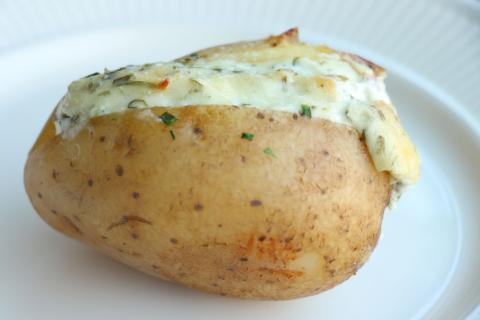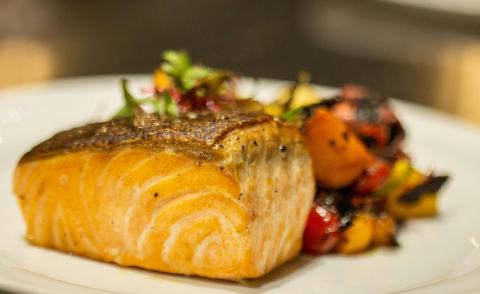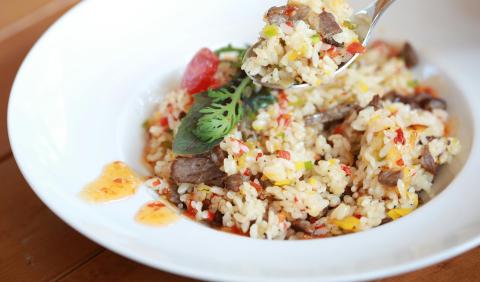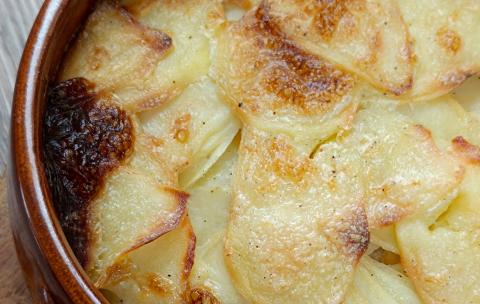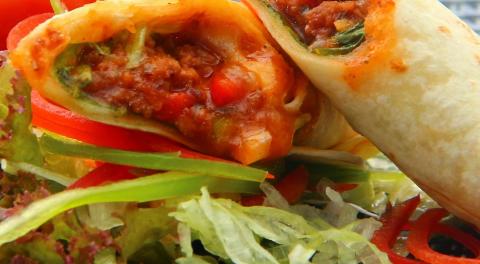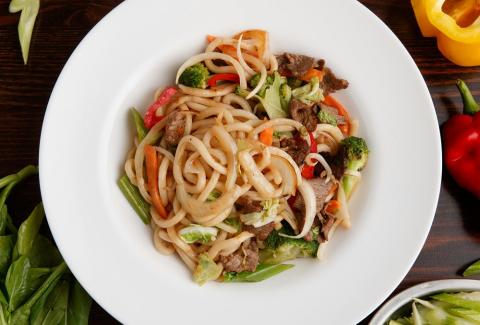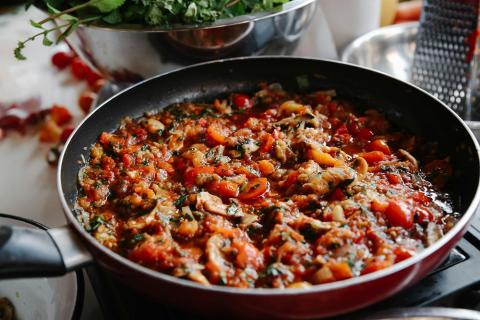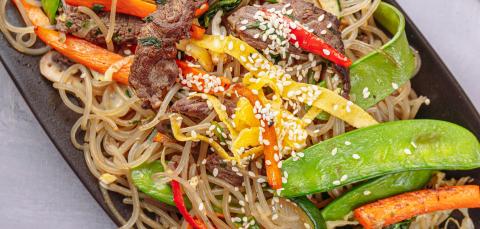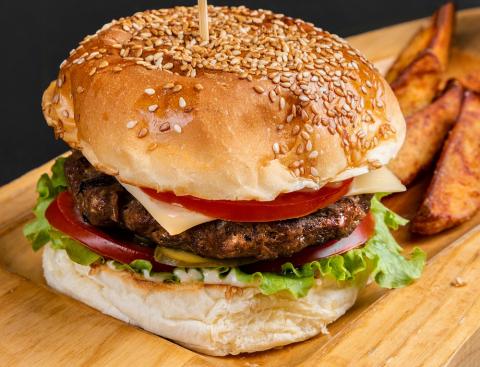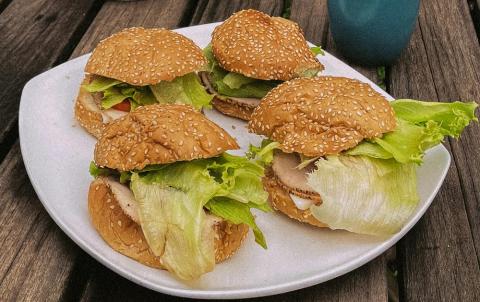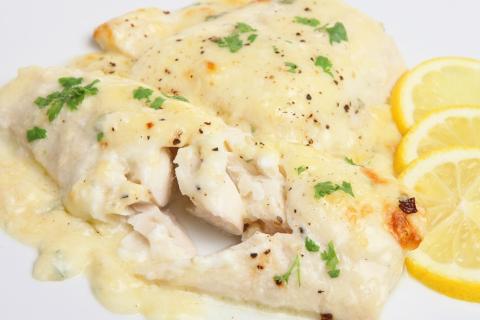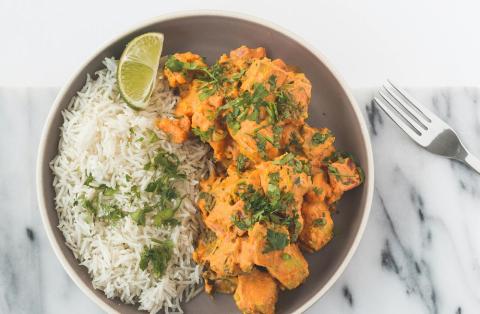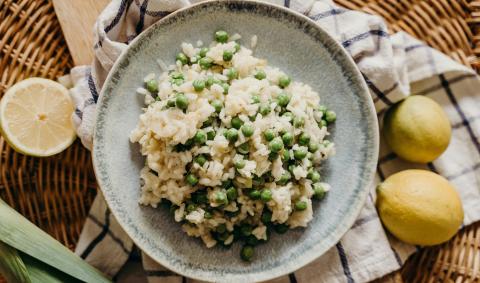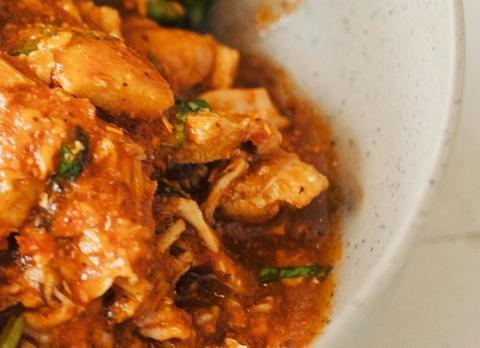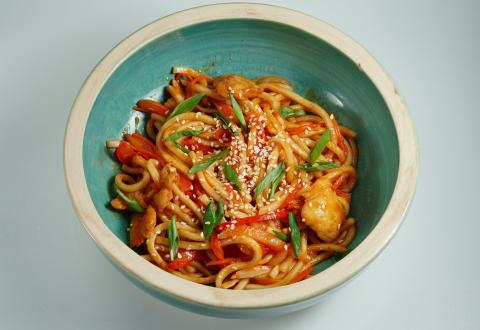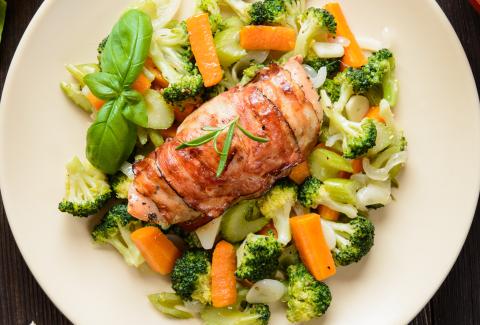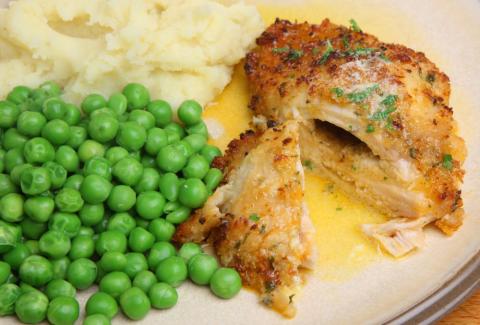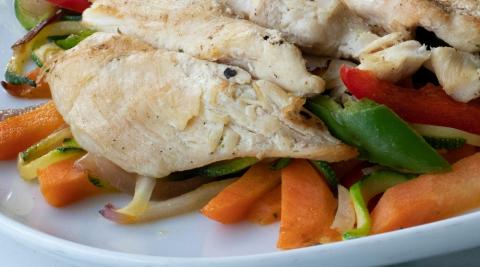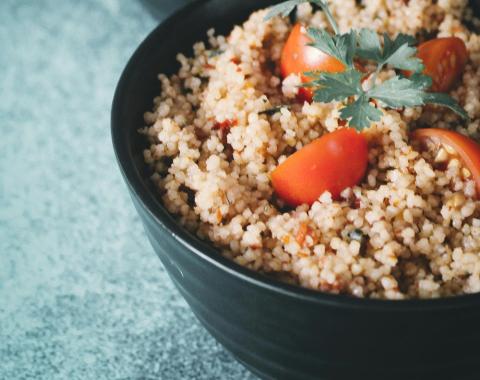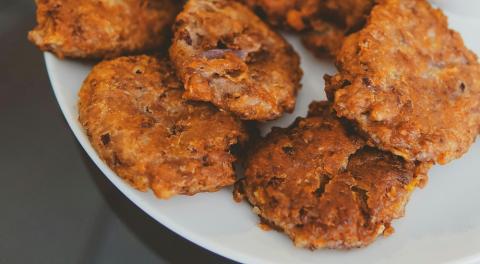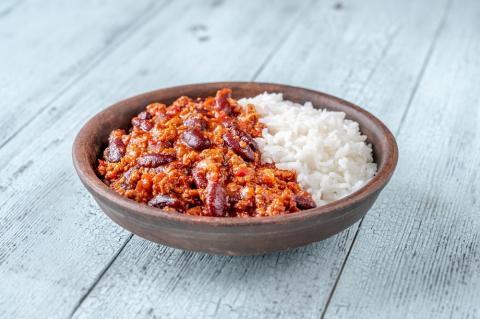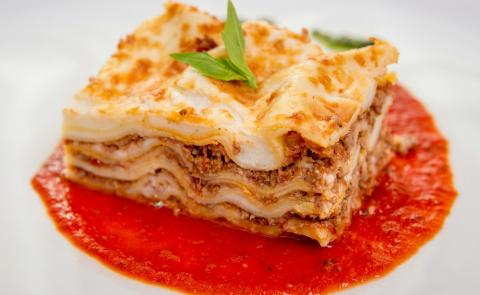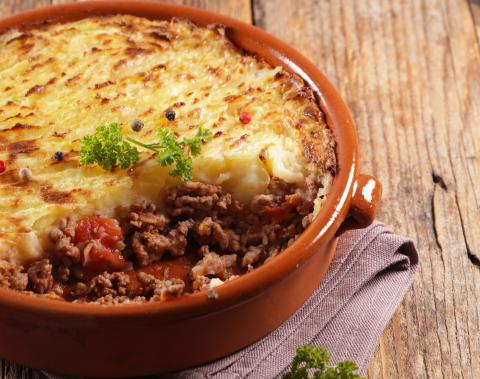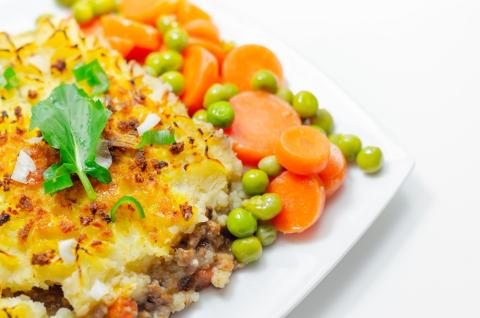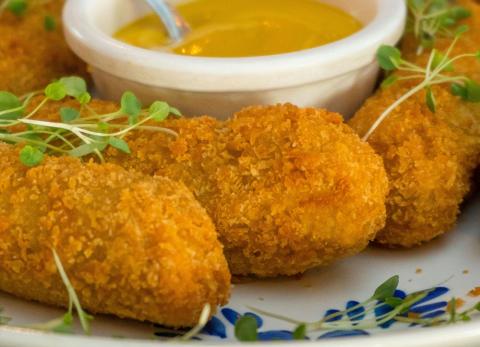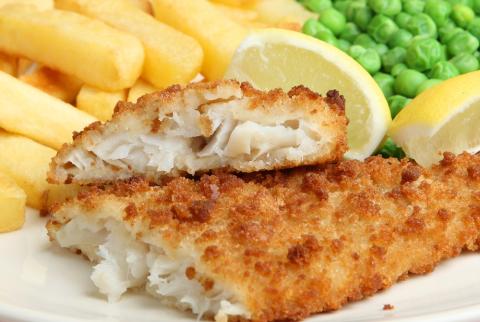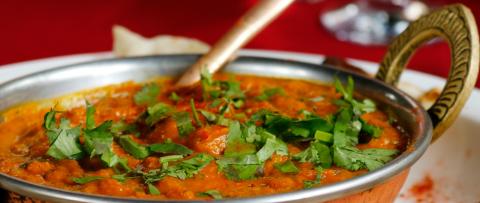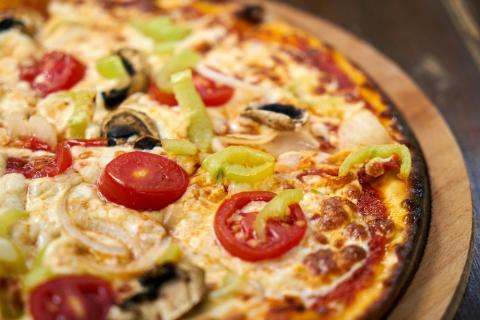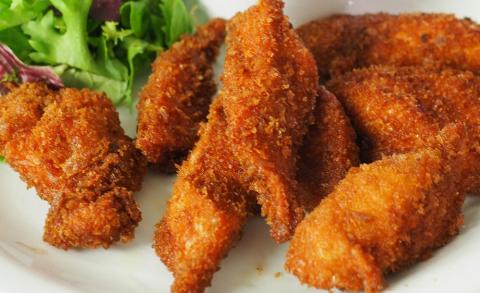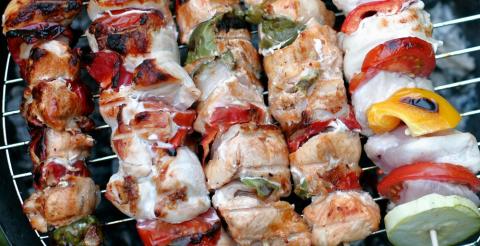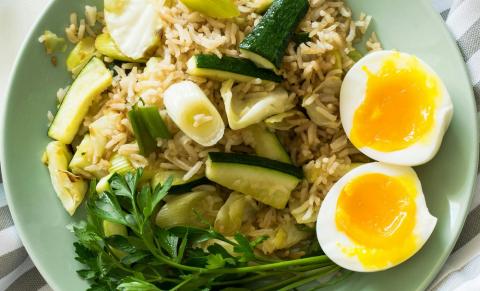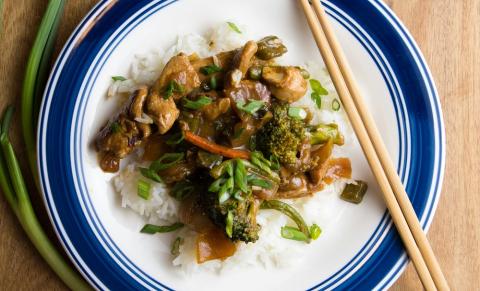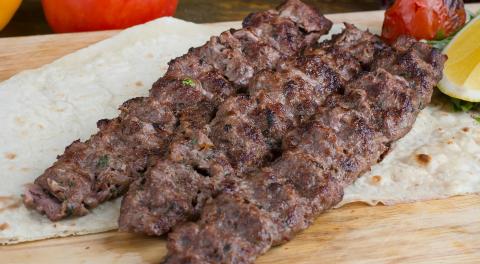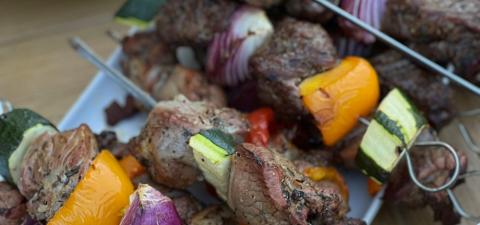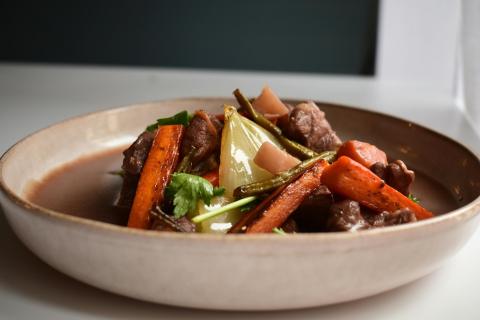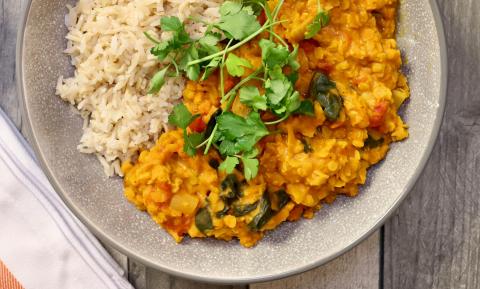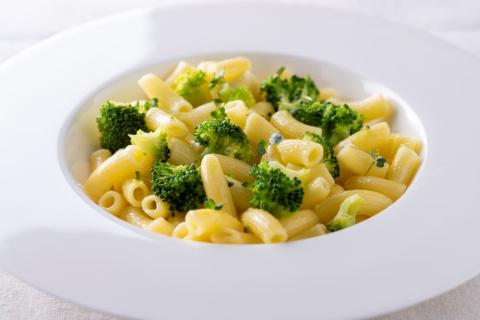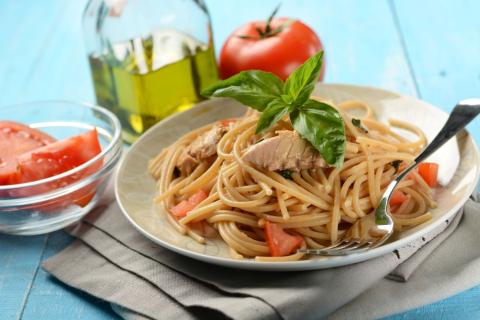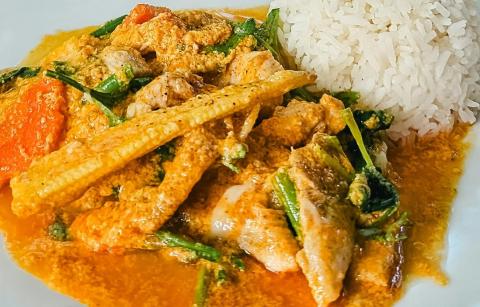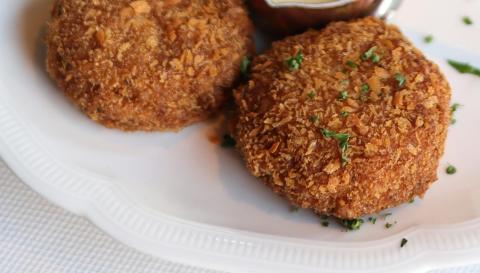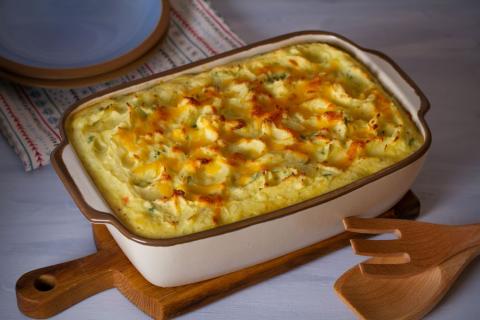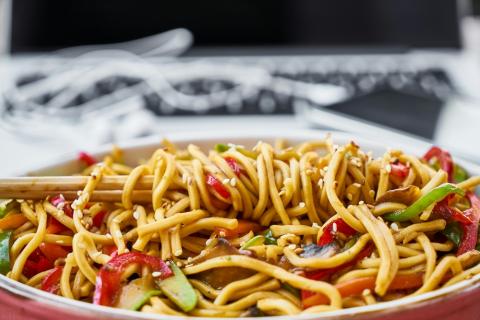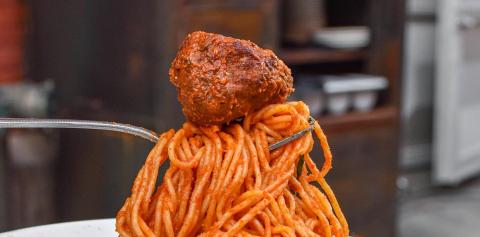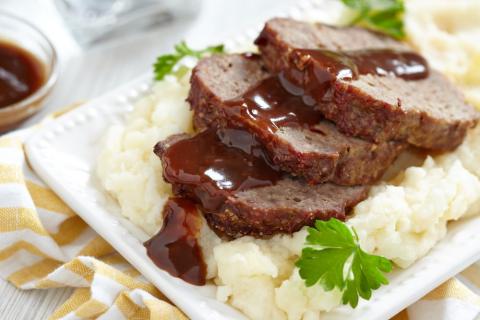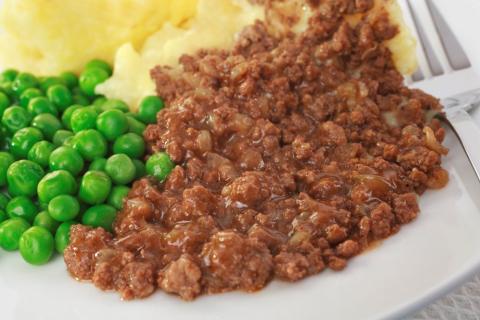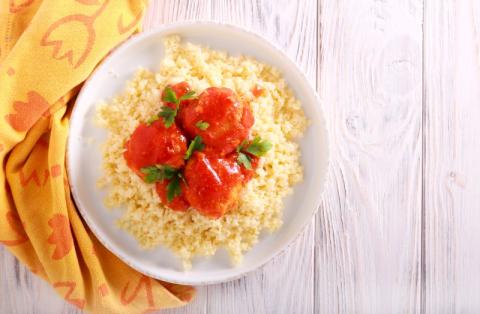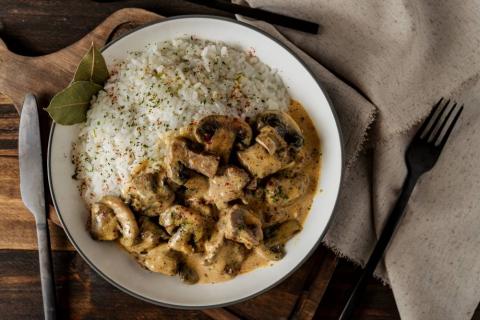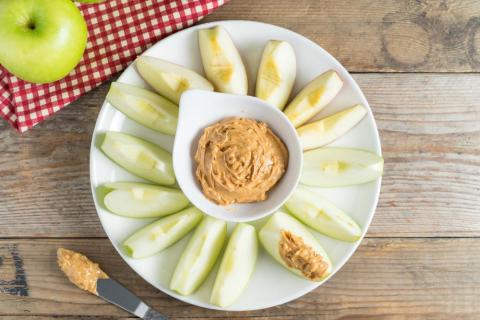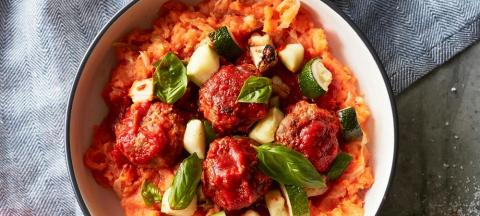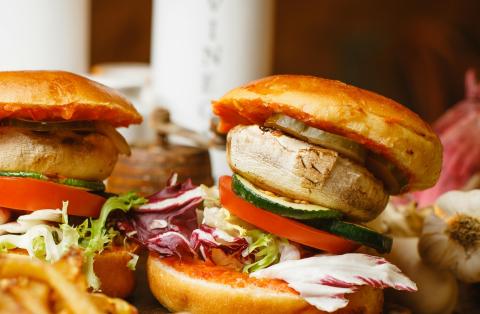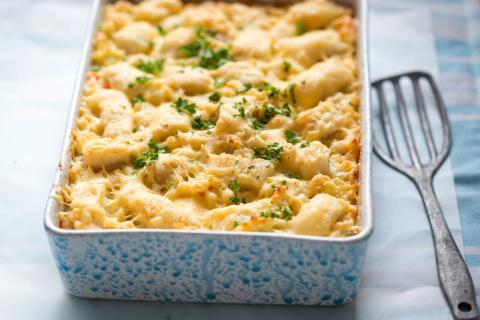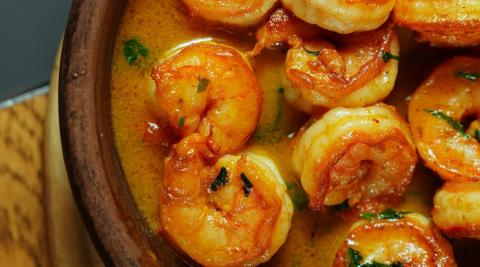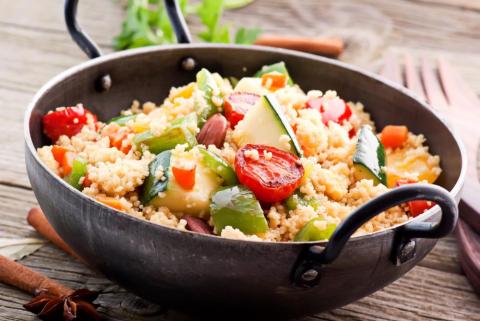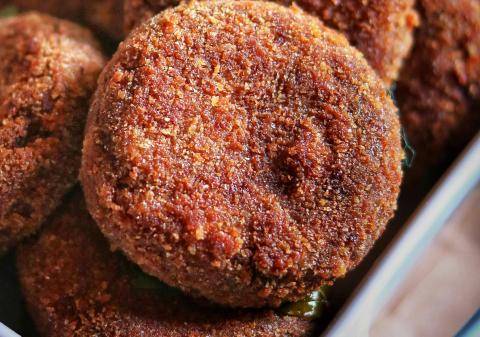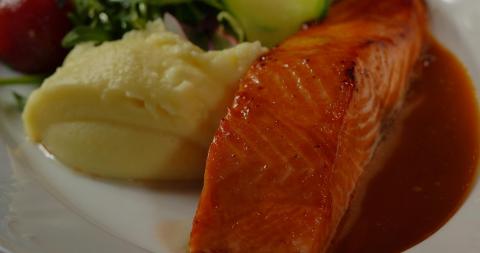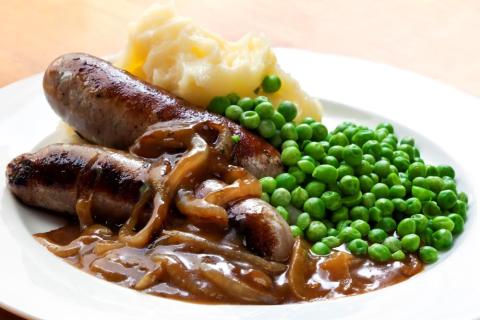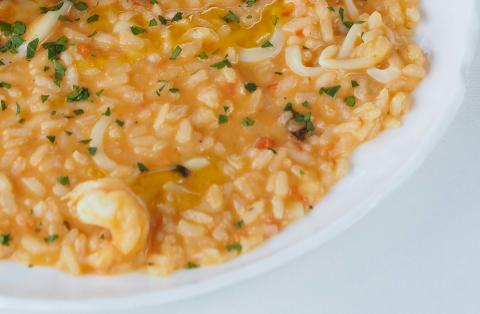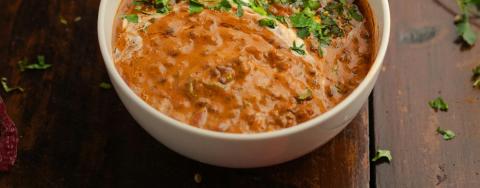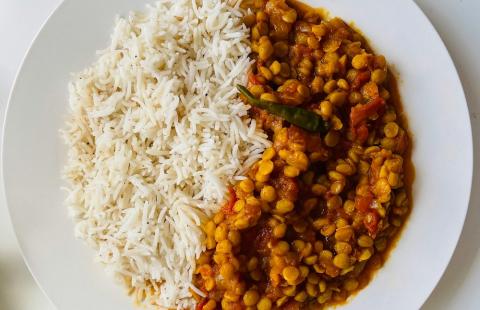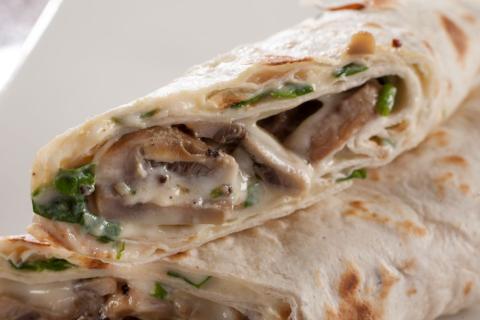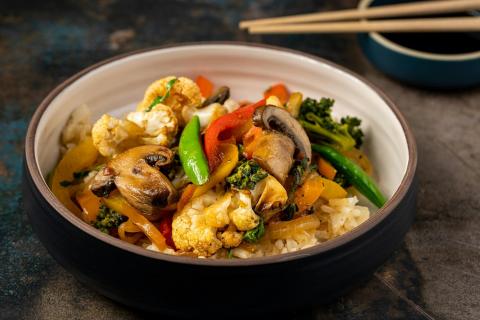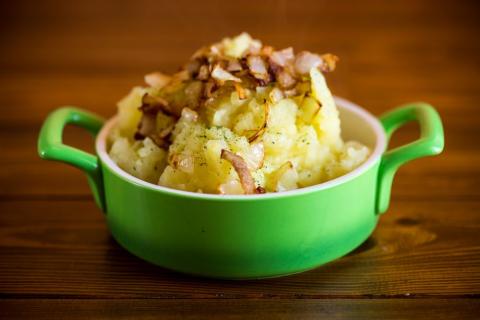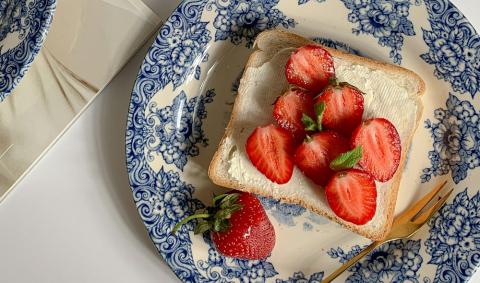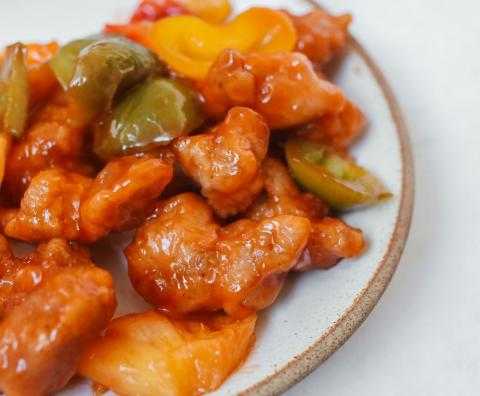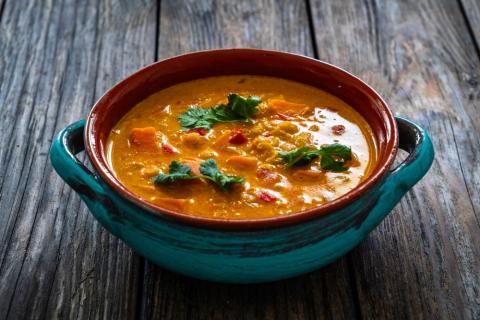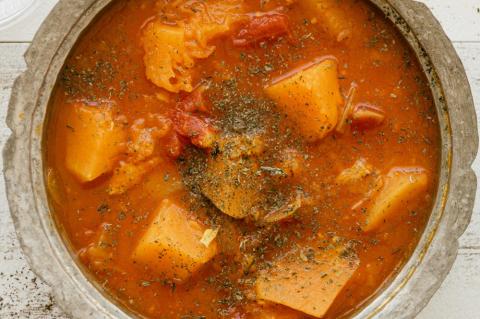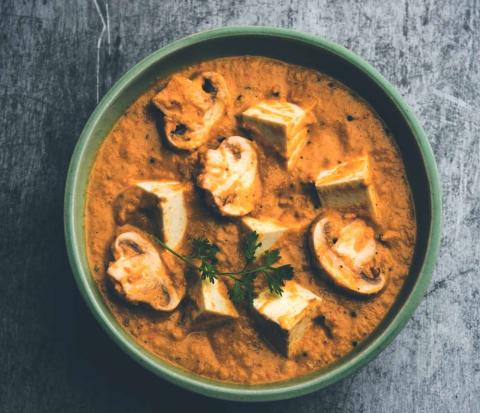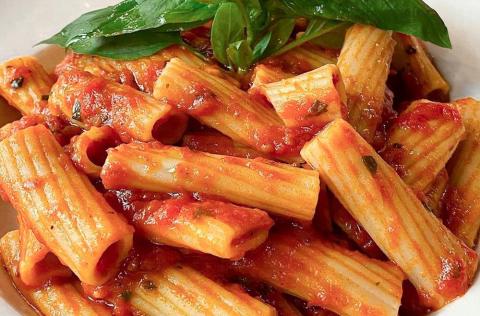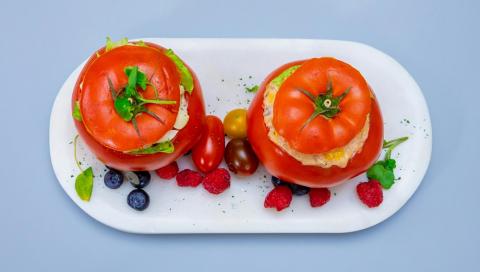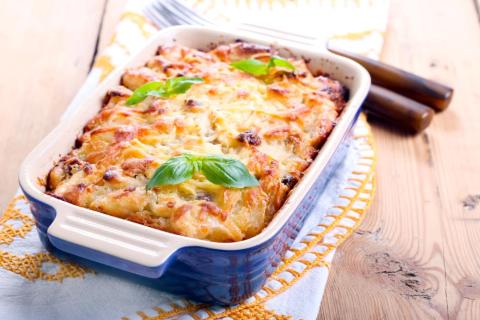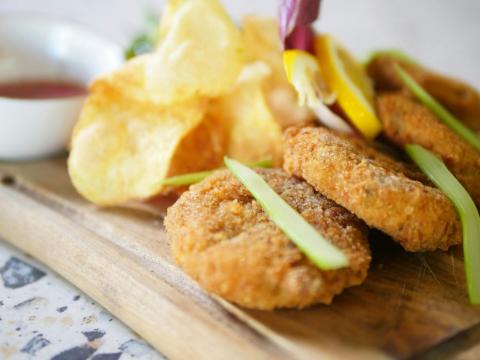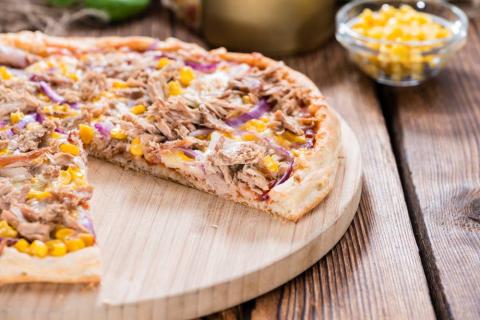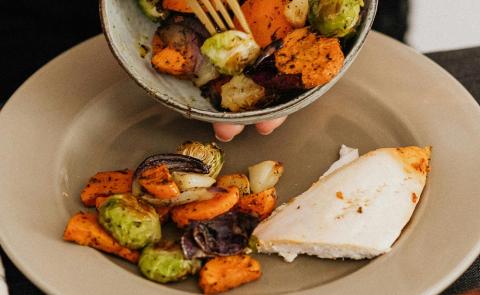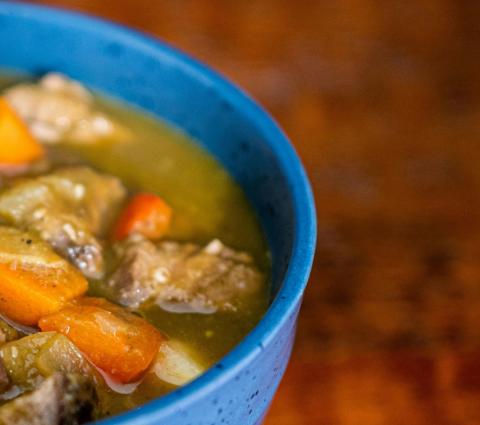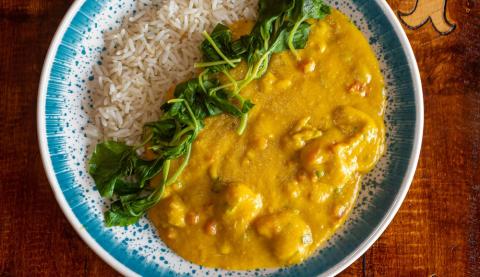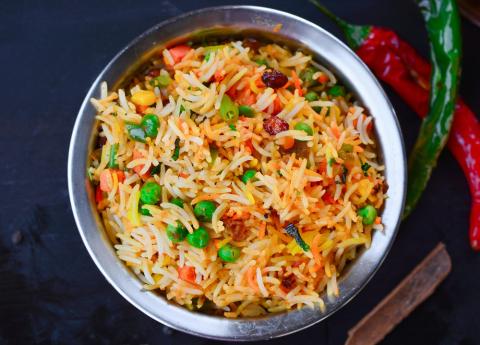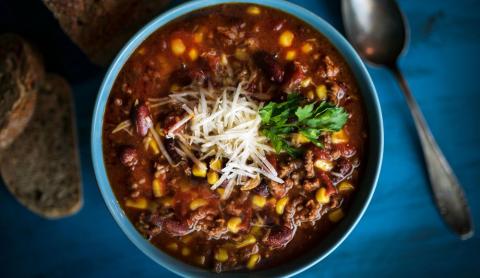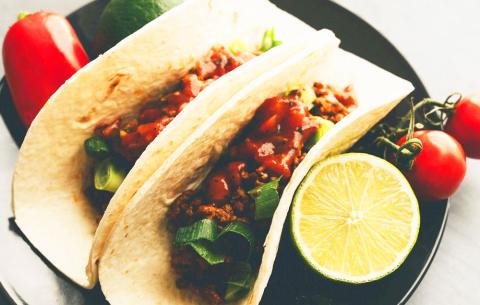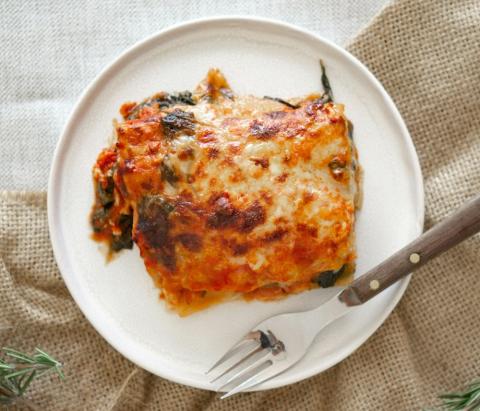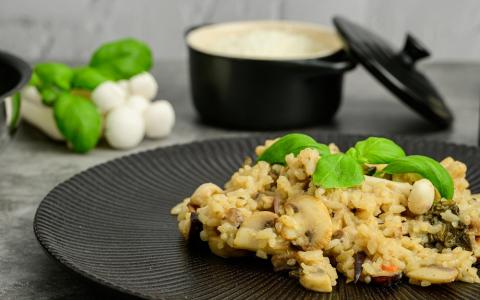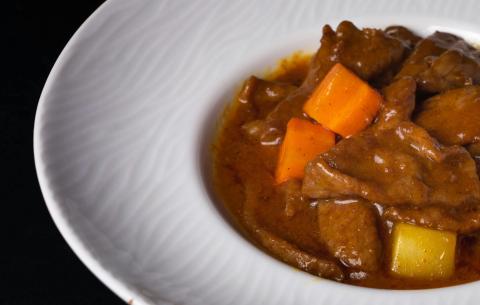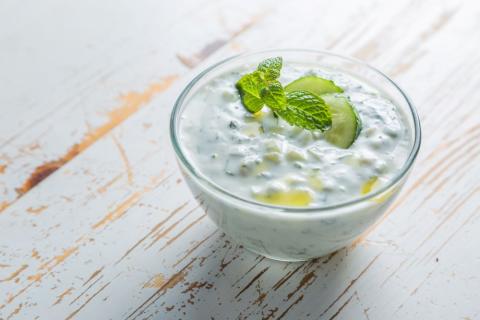- 8 Large (1kg) Potatoes
- 1 Large (240g) Onion
- 3 ½ Tablespoons (55g) Low Fat Spread
- 1 (7g) Beef Stock Cube (used reduced salt whenever possible)
- ½ Pint (300ml) Boiling Water
- 1 Pinch Black Pepper to taste
- 1 Small Pack (300g) Cooked Lean Beef
- 16 Slices (160g) Pickled Beetroot
Ingredients
Allergy Disclaimer
Always check the label of each ingredient for allergy warnings.
Method
- Peel the potatoes and onion. Slice them thickly.
- Melt the low fat spread in a pan. Add the potatoes and onion and fry for a few minutes. If you're using raw meat, you'll need to dice it and add it to the pan at this point too.
- Dissolve the stock cube in the water. Add the stock and pepper to the pan. Cover and bring to the boil. Simmer for 1 hour, stirring occasionally to prevent sticking.
- Add the meat (if you're using pre-cooked not raw meat) and cook until the potatoes are slightly brown and the meat is hot.
- Serve with sliced beetroot.
Time Saver Tips
Don’t peel the potatoes.
Cost Saver Tips
This is a great recipe to make use of any leftover meat. Remember if you're using raw meat it needs to be added at step 2 to ensure it's cooked thoroughly. This can also be really tasty served with oatcakes, which are another healthy choice for wee ones. Why not try adding vegetables, such as carrot or turnip? You could even use lots of vegetables instead of meat.
Tips for Kids
Chop up the onions or any other vegetables very small.
Nutritional Information
Based on a single serving of 342g (% of an adult's reference intake)
Energy
434 kcals ( 22 %)
1,828 kJ ( 22 %)
Fat
4.3 g ( 22 %)
Saturates
42.4 g ( %)
Sugar
6.5 g ( 7 %)
Salt
1.1 g ( 18 %)
Detailed nutritional information
| Per 100g | Per 342g serving | |
|---|---|---|
| Energy Kcals | 127 | 434 |
| Energy Kj | 534 | 1,828 |
| Protein | 10.9 g | 37.3 g |
| Total Fat | g | g |
| Saturated Fat | 1.2 g | 4.3 g |
| Carbohydrates | 12.4 g | 42.4 g |
| Total Sugars | 1.9 g | 6.5 g |
| NSP Fibre | 1 g | 3.5 g |
| Sodium | 126 mg | 429 mg |
| Salt | 0.3 g | 1.1 g |
Find out about nutritional labelling
Nutrition labels on the front of packaging
- Most of the big supermarkets and many food manufacturers display nutritional information on the front of pre-packed food.
- Front of pack nutrition labels provide information on the number of grams of fat, saturated fat, sugars and salt and the amount of energy (in kJ and kcal) in a serving or portion of a recipe.
- The labels also include information about reference intakes (expressed as a percentage) which are guidelines about the approximate amount of particular nutrients and energy required for a healthy diet.
- The colour coding tells you at a glance if the food has high (red), medium (amber) or low (green) amounts of fat, saturated fat, sugars and salt.
- The more greens on the label, the healthier the choice
- Amber means neither high nor low, so you can eat foods with all or mostly ambers on the label most of the time.
- Reds on the label means the food is high in that nutrient and these are the foods we should cut down on. Try to eat these foods less often and in small amounts.
Food shopping tips
If you’re trying to decide which product to choose, check to see if there's a nutrition label on the front of the pack. This will help you to quickly assess how your choices stack up. You will often find a mixture of red, amber and green colour coding for the nutrients. So when you're choosing between similar products, try to go for more greens and ambers and fewer reds if you want to make a healthier choice.
 Activities & Play
Activities & Play Behaviour
Behaviour Childcare
Childcare Development & Growing Up
Development & Growing Up Family, Friends & Relationships
Family, Friends & Relationships Feeding Your Baby
Feeding Your Baby Food & Eating
Food & Eating Health & Safety
Health & Safety Mental Health & Wellbeing
Mental Health & Wellbeing Money & Work
Money & Work Online Behaviour & Safety
Online Behaviour & Safety Pregnancy & First Days
Pregnancy & First Days School & Education
School & Education Sleep
Sleep


